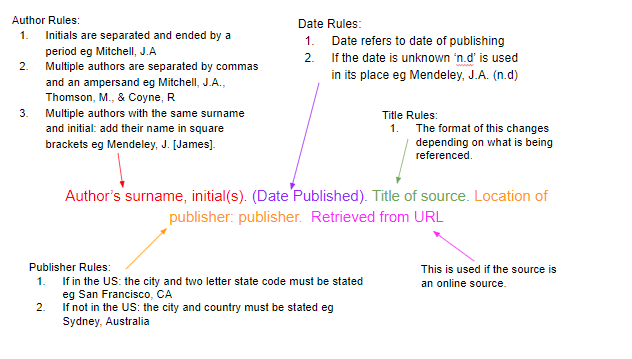What are APA style reference list? The references below use the APA Publication Manual 7 (released on October 2019). Learn how to properly cite a source or reference in APA style format in this full APA format citation guide. Read the other guides to learn how to cite other source types according to research papers, professional papers, scholarly journal’s, and student essays.
Understanding an APA reference list: what is APA style?
APA is a writing format for academic documents. These documents typically include scholarly journals, books, student essays, and other educational material. For example, in the field of behavioral and social sciences (including sociology, education, health science, criminal justice, and psychology) APA style is used as a standard format for research.
APA stands for the American Psychological Association. The APA became involved in journal publishing in 1923. And in 1929, an APA committee had created a seven-page writer’s guide published in the Psychological Bulletin. Editions of the APA manual have since evolved. With major releases in 1974, 1983, 1994, 2001, 2009, and 2019. Each with their edition titles.
For example, the 2019 edition is referred to as “APA 6” style. Revisions of the APA style guide tend to follow developments of the English language and linguistics as a whole.
APA Style 7th Edition font suggestions
APA Publication Manual 7 requires that chosen fonts be accessible to readers and consistent throughout essays and research papers. The APA Manual does not specify a certain typeface or font for papers. They do recommend the following typefaces with their point sizes as follows:
| Font | Point size |
| Calibri | 11-point |
| Arial | 11-point |
| Lucida Sans Unicode | 10-point |
| Times New Roman | 12-point |
| Georgia | 11-point |
| Computer Modern | 10-point |
What is an APA Reference List?
Reference lists (or reference pages) are the list of sources at the end of a standard APA research paper. Most sources follow regular and straightforward rules. However, sources obtained from academic journals carry a unique weight in research writing, these sources are subject to special rules defined by the publication in the 7th edition.
Many changes have been made to reference lists between the APA 6 and APA 7 editions.
General formatting
Your reference list should appear the end of your paper. It should include all the necessary information for a reader to locate and source anything that you cited during the writing the research paper. In-text citations, for example, should also get included in the reference list.
The reference should begin on a new, separate page from the rest of the essay. And the label should get included titles “References” in bold, centered text. Do not underline or quote the reference title on this page.

Basic rules
The basic rules that follow reference lists will be suitable for most research papers and essays. They are as follows:
| Rule | Example |
| All lines after the first one should be indented by a 1/2 inch margin from the left. This is called a hanging indentation. | Sources as follws |
| Author’s names should be inverted to be last names first | Smith, Ryan |
| Author’s first and middle names should be written as initials | Smith, R. D. |
| Provide the last and first/middle initials for all authors of a work up to 20 authors. Separate them with a comma and ampersand (&) after the final author. | Smith, Johnson, Carole & Wyatt |
| Reference list entries should get alphabetized by the authors last name | Algrim Johnson |
| For multiple articles or sources by the same author, list them in chonological order | Johnson (2009), Johnson (2022) |
| When referring to books articles, reports, songs, webpages, or other sources, only the first letter of the word of the title and subtitle, then after a colon or a dash in the title. | Aptekar, D. (2006). Traction. Ladybird Books. |
| Italicize title of longer works, books, edited collections, etc. | Aptekar, D. (2006). Traction. Ladybird Books. |
| Do not italicize, underline, or put quotes around shorter works like chapters, books, or other source material. |
Rules for academic journals
The basic rules that follow reference lists will be suitable for most research papers and essays. They are as follows:
| Rule | Example |
| Present journal titles in full. | The Human Brain |
| Italicize journal titles. | The Human Brain |
| Maintain nonstandard punctuation and capitalization | Use PhiloSOPHIA instead of Philosophia, or Past & Present instead of Past and Present. |
| Capitalize major words in the titles of journals. | Johnson, J.A. (2019). Citation: Why is it so important. GrammarBrain Journal, 67(2), 81-95 |
| Capitalize the word of the titles and subtitles of journal articles. And the first word after a colon or dash in the title. | Johnson, J.A. (2019). Citation: Why is it so important. GrammarBrain Journal, 67(2), 81-95 |
| Do not italicize or underline the article title. | Johnson, J.A. (2019). Citation: Why is it so important. GrammarBrain Journal, 67(2), 81-95 |
| Do not enclose the article title in quotes. | Johnson, J.A. (2019). Citation: Why is it so important. “GrammarBrain Journal”, 67(2), 81-95 |
APA 7th Edition Formatting and Style Guides:
Here are more resources on APA style:
- General APA Citation Format
- In-text Citations
- In-text Citations: Author/Authors
- Reference List: Basic Rules
- Reference List: Author/Authors
- Reference List: Articles in Periodicals
- Reference List: Books
- Reference List: Other Print Sources
- Reference List: Electronic Sources
- Reference List: Audiovisual Material
- Reference List: Non-Print Resources
- APA Legal References
- Footnotes and Appendices
- Numbers and Statistics
Inside this article
Fact checked:
Content is rigorously reviewed by a team of qualified and experienced fact checkers. Fact checkers review articles for factual accuracy, relevance, and timeliness. Learn more.
Core lessons
Glossary
- Abstract Noun
- Accusative Case
- Anecdote
- Antonym
- Active Sentence
- Adverb
- Adjective
- Allegory
- Alliteration
- Adjective Clause
- Adjective Phrase
- Ampersand
- Anastrophe
- Adverbial Clause
- Appositive Phrase
- Clause
- Compound Adjective
- Complex Sentence
- Compound Words
- Compound Predicate
- Common Noun
- Comparative Adjective
- Comparative and Superlative
- Compound Noun
- Compound Subject
- Compound Sentence
- Copular Verb
- Collective Noun
- Colloquialism
- Conciseness
- Consonance
- Conditional
- Concrete Noun
- Conjunction
- Conjugation
- Conditional Sentence
- Comma Splice
- Correlative Conjunction
- Coordinating Conjunction
- Coordinate Adjective
- Cumulative Adjective
- Dative Case
- Determiner
- Declarative Sentence
- Declarative Statement
- Direct Object Pronoun
- Direct Object
- Diction
- Diphthong
- Dangling Modifier
- Demonstrative Pronoun
- Demonstrative Adjective
- Direct Characterization
- Definite Article
- Doublespeak
- False Dilemma Fallacy
- Future Perfect Progressive
- Future Simple
- Future Perfect Continuous
- Future Perfect
- First Conditional
- Irregular Adjective
- Irregular Verb
- Imperative Sentence
- Indefinite Article
- Intransitive Verb
- Introductory Phrase
- Indefinite Pronoun
- Indirect Characterization
- Interrogative Sentence
- Intensive Pronoun
- Inanimate Object
- Indefinite Tense
- Infinitive Phrase
- Interjection
- Intensifier
- Infinitive
- Indicative Mood
- Participle
- Parallelism
- Prepositional Phrase
- Past Simple Tense
- Past Continuous Tense
- Past Perfect Tense
- Past Progressive Tense
- Present Simple Tense
- Present Perfect Tense
- Personal Pronoun
- Personification
- Persuasive Writing
- Parallel Structure
- Phrasal Verb
- Predicate Adjective
- Predicate Nominative
- Phonetic Language
- Plural Noun
- Punctuation
- Punctuation Marks
- Preposition
- Preposition of Place
- Parts of Speech
- Possessive Adjective
- Possessive Determiner
- Possessive Case
- Possessive Noun
- Proper Adjective
- Proper Noun
- Present Participle
- Prefix
- Predicate



